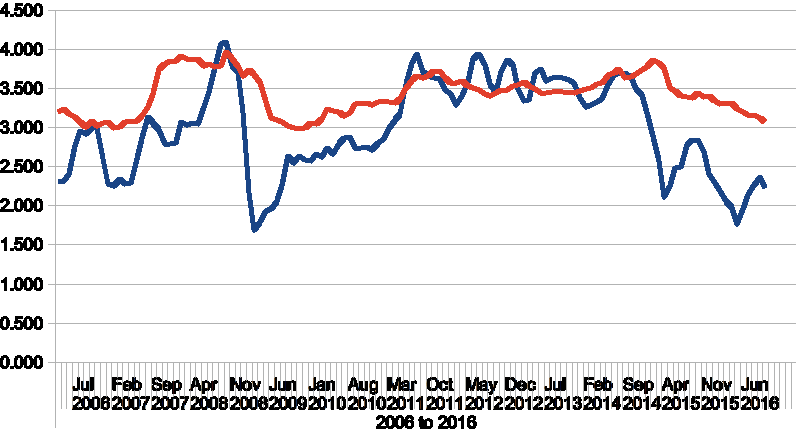Gas v. Milk (2016)

They're items nearly every American can't live without, and they've been in the news a lot this summer. As prices for gasoline and milk level out, consumers have paid for—gas that hovers at $2 a gallon and milk that costs anywhere from $3 to $5 a carton. But the question isn't whether these prices are too high—it's whether we're paying enough for our cheap dairy and fossil fuels. Americans are some of the biggest consumers of both gas and milk in the world. We use more than 140 billion gallons of gasoline each year—or roughly 474 gallons per person. And only India, with the second-largest population on the planet, drinks more milk than Americans do. Both items support ecologically bankrupt industries that provide cheap commodities in mass quantities, and collectively contribute to the majority of the world's greenhouse gas emissions.
Agricultural economists blame the higher-than-average milk prices on higher prices for corn, which are related to the explosion in ethanol production for biofuels. Cows raised in factory farms eat a lot of corn, and when prices for it rise, so do prices for milk. Monsanto execs claim that activist groups are also slowing down milk production by criticizing producers' use of recombinant bovine growth hormone (rBGH). (rBGH is a hormone that forces cows to produce more milk, but it can lead to a variety of health problems in the animals, including painful mastitis.) What's interesting about these two liquids, at least to me, is that no matter how high prices go, we're still willing to pay whatever they charge at the pump or in the grocery store, even if there are more environmentally friendly and healthier alternatives.
Maybe the way to break our addiction to oil is to make prices for it even higher, so that communities and governments will be forced to come up with better, less gas-guzzling solutions to get their citizens from place to place. And there are millions of cows living in dairy factory farms in the U.S. that would probably be happy if the price of milk went so high that producers were forced to develop alternative methods of production that didn't depend on grain, or its price fluctuations. Higher prices may sound crazy, but they might just work to our advantage.
The best milk is grass fed milk, so perhaps campaign for dairy that is grass-fed, which should reduce the amount of corn used in dairy production.
Happy to upvote, following and looking forward to reading more of your posts. Catch us also on Twitter Twitter✔. Cheers. Stephen